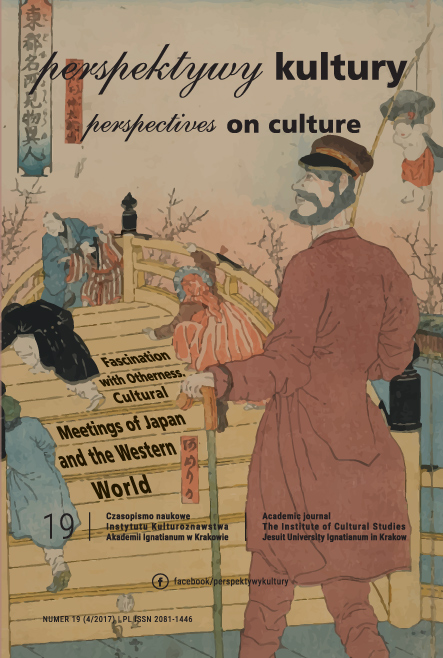Vatican Radio: Focus on evangelization – Changing shape
Abstract
Vatican Radio has been serving the Church since 1931 as a modern means of evangelization. Its founding demonstrated the new status of the Vatican City State as a sovereign state in international law. Vatican Radio has constantly linked the Holy Father with the faithful and carried out its mission of evangelization, its core identity, in many languages. But with increasing costs and the new communications technologies, it recently became urgent to reflect deeply on what shape the radio should take in future. In 2015, Pope Francis established the Secretariat for Communications and tasked it with integrating and modernizing all the media units and functions of the Holy See. The four-year reform process includes structural and program changes for Vatican Radio and should be completed by the end of 2018.
References
BEA Fernando. 1981. Qui Radio Vaticana. Mezzo secolo della Radio del Papa. Città del Vaticano: Edizioni Radio Vaticana.
BEA Fernando, DE CAROLIS Alessandro. 2011. Ottant’anni della Radio del Papa. Città del Vaticano: Libreria Editrice Vaticana.
CIANFARRA Camille M. 1944. The Vatican and the War. New York: E.P. Dutton.
DOMINGUES Filipe. 2017. „Vatican communications czar says losing mo- ney “robs the poor””. Crux 2017/02/10: https://cruxnow.com/inter- views/2017/02/10/vatican-communications-czar-says-losing-money-robs-poor (12.08.2017).
FRANCESCO. 2017. Discorso del Santo Padre Francesco al partecipanti alla Ple- naria della Segreteria per la Comunicazione. http://w2.vatican.va/content/ francesco/it/speeches/2017/may/documents/papa-francesco_20170504_ plenaria-segreteria-comunicazione.html (12.08.2017).
FRANCESCO. 2015. „Litterae Apostolicae Motu Proprio Datae Quibus Secretaria pro Communicatione conditur”. Acta Apostolicae Sedis 7/2015: 591-592.
GANDOLFI Maria Elisabetta, MOCELLIN Guido. 2017. „Santa Sede – ri- forma dei media vaticani: convergenza digitale; intervista a mons. Dario Edoardo Viganò”. Il Regno – Attualità 4/2017: 76.
GHISANI Giacomo Renato. 2009. La Radio Vaticana tra ordinamento canonico e ordinamento italiano. Il caso del presunto inquinamento elettromagnetico. Città del Vaticano: Lateran University Press.
GRZEBIEŃ Ludwik SJ (red.). 1990. Sekcja Polska Radia Watykańskiego 1938- 1988. Rzym: Radio Watykańskie.
MARCHIONE Margarita. 2002. Consensus and Controversy: Defending Pope Pius XII. New York: Paulist Press.
MATELSKI Marilyn J. 1995. Vatican Radio. Propagation by the airwaves. West- port, Connecticut-London: Praeger.
PIUS XI. 1931. „Nuncium Radiophonicum Diei XII Februarii MDCCCOXXXI”. Acta Apostolicae Sedis 03/1931: 65-70.
RADIO WATYKAŃSKIE. 2012. „Radio Watykańskie bez fal średnich i krót- kich w Europie i Amerykach”. Serwis Radia Watykańskiego 12/06/2012. http://www.radiovaticana.va/proxy/pol_RG/2012/giugno/12_06_12.html (12.08.2017).
RADIO WATYKAŃSKIE. 2015. „Watykan: utworzenie Komisji ds. Reformy Mediów”. http://pl.radiovaticana.va/news/2015/04/30/watykan_utworze- nie_komisji_ds_reformy_medi%C3%B3w/1140863 (12.08.2017)
RADIO WATYKAŃSKIE. 2017. „Radio Watykańskie: ograniczenia w nada- waniu na fali ultrakrótkiej”. http://pl.radiovaticana.va/news/2017/01/06/ radio_watyka%C5%84skie_ograniczenia_w_nadawaniu_na_fali_ ultrakr%C3%B3/1283598 (12.08.2017).
SEQUEIRA Eustace Maurice Aloysius. 2008. Vatican Radio is Faithful to its Calling as ‘The Voice of the Pope’. Roma: Pontificia Studiorum Universitas A S. Thoma Aq. in Urbe.
Copyright (c) 2017 Jesuit University Ignatianum in Krakow

This work is licensed under a Creative Commons Attribution-NoDerivatives 4.0 International License.
Autor, zgłaszając swój artykuł, wyraża zgodę na korzystanie przez Wydawnictwo Uniwersystet Ignatianum z utworu na następujących polach eksploatacji:
- utrwalania utworu w formie papierowej, a także na nośniku cyfrowym lub magnetycznym;
- zwielokrotnienia utworu dowolną techniką, bez ograniczenia ilości wydań i liczby egzemplarzy;
- rozpowszechniania utworu i jego zwielokrotnionych egzemplarzy na jakimkolwiek nośniku, w tym wprowadzenia do obrotu, sprzedaży, użyczenia, najmu;
- wprowadzenia utworu do pamięci komputera;
- rozpowszechniania utworu w sieciach informatycznych, w tym w sieci Internet;
- publicznego wykonania, wystawienia, wyświetlenia, odtworzenia oraz nadawania i reemitowania, a także publicznego udostępniania utworu w taki sposób, aby każdy mógł mieć do niego dostęp w miejscu i czasie przez siebie wybranym.
Wydawca zobowiązuje się szanować osobiste prawa autorskie do utworu.





